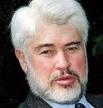The Wits Art Museum is running an exhibition of paintings and drawings by Moses Tladi, whom it describes as one of South Africa's "great, but largely unknown, landscape painters". Although almost two dozen of Tladi's works are on display, the exhibition, which runs until 16th July, is worth visiting if only to see the oil entitled "The house in Kensington B".
Built on a large piece of rolling Highveld grassland which Tladi's father-in-law bought in 1905 in this suburb north of Johannesburg, near what is now called Ferndale, the house was expropriated and the family forcibly removed to Soweto in 1956.
Born in 1903 in Sekhukhuneland, Tladi was the first black South African artist to exhibit at the South African National Gallery in Cape Town. He was described in a newspaper in 1928 as a "native genius employed as a gardener in Johannesburg who has taught himself to paint in oils." Also using watercolours, Tladi painted views of the Magaliesberg, the Drakensberg, and of places around Kroonstad, along with still lifes, character studies, and portrait sketches.
One of his fine works, depicting a series of mine dumps and nearby trees and buildings, apparently helped to inspire a Pierneef, though Tladi's work is less soulless than some of that of the more famous artist.
Here was a man who painted as beautifully as many others much better known. He saw the same landscapes and the same gardens and the same trees and the same flowers and the same mountains. Yet he was constantly reminded that they were nearly all reserved for someone else.
According to Angela Read Lloyd, who wrote a book on Tladi and her search for "the artist in the garden" of her family home in Parktown, he was working on the Kensington B painting when he and his family were turned out of their home. "All his work was packed up to be removed to the patch of veld in what became Soweto, and he never had the heart to unpack it, so he never saw it again".
The family had moved to Kensington B and planted a garden and orchard because they wanted to live in the country. In Soweto, according to Rekiloe, the artist's elder daughter, "there were toilets stuck in the veld and you looked for a number and put up a shack. Then, only after some time, they erected two rooms." The younger daughter, Mmapula, says "the move to Soweto killed" her father. A notice at the Wits exhibition says Tladi chopped down all the peach trees around his old home in despair before being moved and that he had died of a broken heart in 1959.
There is no trace of a political message in any of Tladi's works. If one did not know the background, "The house in Kensington B" would testify to nothing other than one man's extraordinary ability to depict his house and the trees beside it in such a way as to tell you that this was his home.
Tladi of course is but one of the two or three million people removed under various laws enacted by the previous government. One can only guess at the number of homesteads destroyed as the removals proceeded, mercilessly, all over South Africa.
According to Angela Read Lloyd, Rekiloe had been noncommittal about lodging a restitution claim. The book asks, "What will justice achieve if retribution means turning out, after a possible succession of different occupants, people who have bought a place in all good faith and themselves created there a home they love?"
Many dispossessed people have chosen financial compensation rather than land under the present government's restitution policy. But it is hard to see how any amount of money, or even of alternative land, could compensate for what was inflicted upon the Tladi family and countless others.
* John Kane-Berman is a policy fellow at the IRR, a think-tank that promotes political and economic freedom. His memoirs, Between Two Fires - Holding the Liberal Centre in South African Politics, were recently published by Jonathan Ball.

